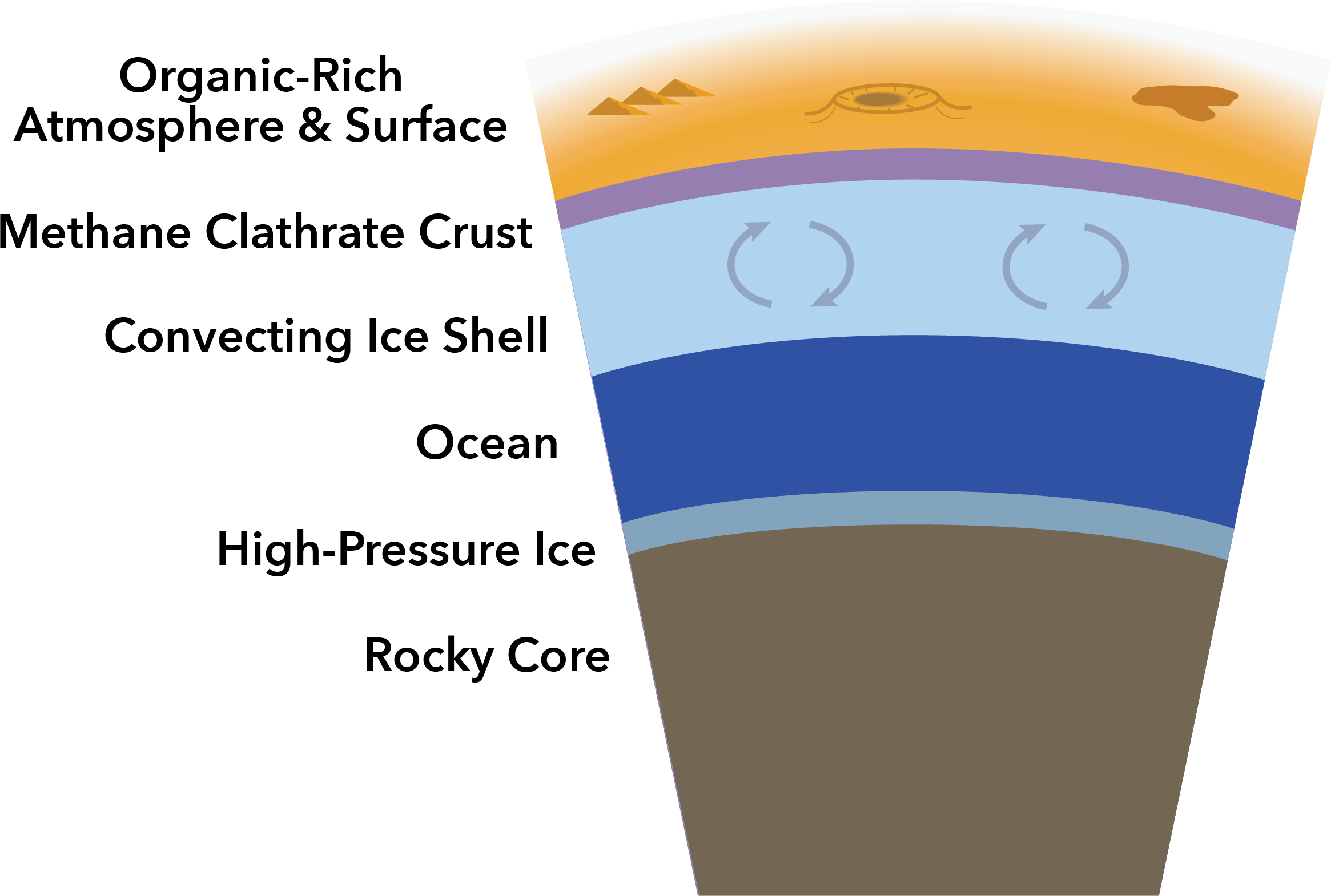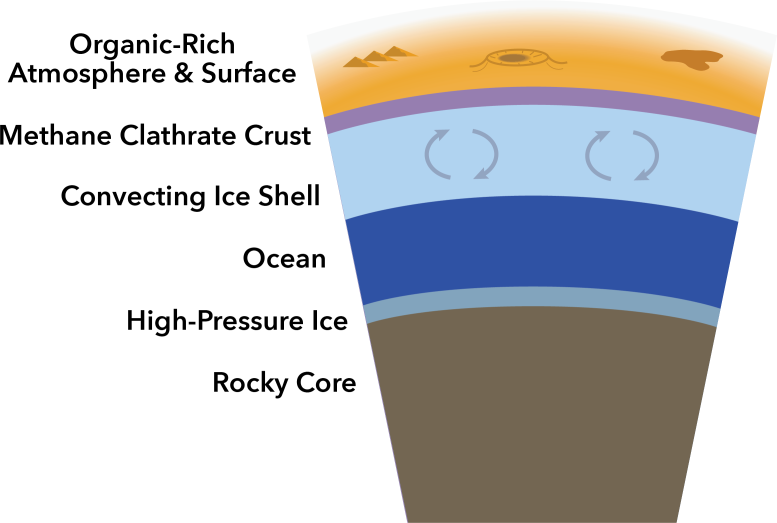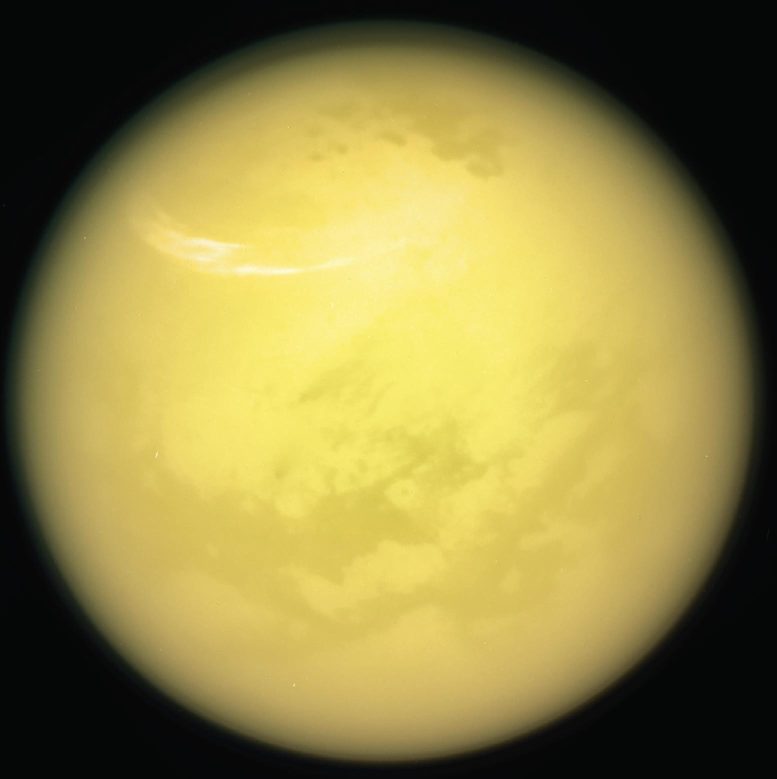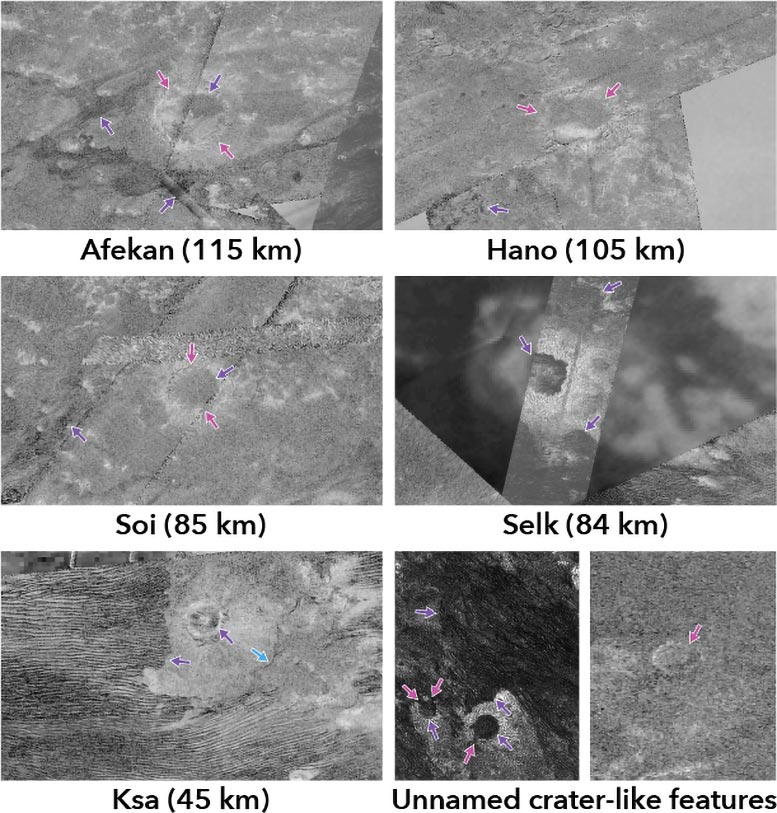

Research on Titan has uncovered a significant layer of methane clathrate ice that explains its shallow craters and warm interior.
This discovery offers new insights into Titan’s methane-rich atmosphere and its potential to support life, setting the stage for the 2028 NASA Dragonfly mission.
Discovering Titan’s Methane Mystery
Saturn’s largest moon, Titan, is the only other place than Earth in our solar system known to have both an atmosphere and liquid bodies—rivers, lakes, and seas—on its surface. Due to Titan’s extremely cold temperatures, these liquids are composed of hydrocarbons like methane and ethane, while its surface consists of solid water ice. A new study by planetary scientists at the University of Hawai‘i at Mānoa has found that methane gas may also be trapped within Titan’s ice, forming a unique crust up to six miles thick. This crust is thought to warm the ice shell beneath it and may help explain Titan’s methane-rich atmosphere.
The research team, led by research associate Lauren Schurmeier and including doctoral candidate Gwendolyn Brouwer and associate director Sarah Fagents of the Hawai‘i Institute of Geophysics and Planetology (HIGP) at UH Mānoa’s School of Ocean and Earth Science and Technology (SOEST), observed that Titan’s impact craters are hundreds of meters shallower than expected. NASA data shows that only 90 craters have been identified on Titan, raising intriguing questions about the moon’s surface and geological history.

Insights From Crater Analysis
“This was very surprising because, based on other moons, we expect to see many more impact craters on the surface and craters that are much deeper than what we observe on Titan,” said Schurmeier. “We realized something unique to Titan must be making them become shallower and disappear relatively quickly.”
To investigate what might be beneath this mystery, the researchers tested in a computer model how the topography of Titan might relax or rebound after an impact if the ice shell was covered with a layer of insulating methane clathrate ice, a kind of solid water ice with methane gas trapped within the crystal structure. Since the initial shape of Titan’s craters is unknown, the researchers modeled and compared two plausible initial depths, based on fresh-looking craters of similar size on a similar-size icy moon, Ganymede.
“Using this modeling approach, we were able to constrain the methane clathrate crust thickness to five to ten kilometers [about three to six miles] because simulations using that thickness produced crater depths that best matched the observed craters,” said Schurmeier. “The methane clathrate crust warms Titan’s interior and causes surprisingly rapid topographic relaxation, which results in crater shallowing at a rate that is close to that of fast-moving warm glaciers on Earth.”

Methane’s Influence on Titan’s Atmosphere
Estimating the thickness of the methane ice shell is important because it may explain the origin of Titan’s methane-rich atmosphere and helps researchers understand Titan’s carbon cycle, liquid methane-based “hydrological cycle,” and changing climate.
“Titan is a natural laboratory to study how the greenhouse gas methane warms and cycles through the atmosphere,” said Schurmeier. “Earth’s methane clathrate hydrates, found in the permafrost of Siberia and below the arctic seafloor, are currently destabilizing and releasing methane. So, lessons from Titan can provide important insights into processes happening on Earth.”
Potential for Life on Titan
The topography seen on Titan makes sense in light of these new findings. And constraining the thickness of the methane clathrate ice crust indicates that Titan’s interior is likely warm–not cold, rigid, and inactive as previously thought.
“Methane clathrate is stronger and more insulating than regular water ice,” said Schurmeier. “A clathrate crust insulates Titan’s interior, makes the water ice shell very warm and ductile, and implies that Titan’s ice shell is or was slowly convecting.”

Future Missions and Exploration
“If life exists in Titan’s ocean under the thick ice shell, any signs of life (biomarkers) would need to be transported up Titan’s ice shell to where we could more easily access or view them with future missions,” Schurmeier added. “This is more likely to occur if Titan’s ice shell is warm and convecting.”
With the NASA Dragonfly mission to Titan scheduled to launch in July 2028 and arrive in 2034, researchers will have an opportunity to make up-close observations of this moon and further investigate the icy surface, including a crater named Selk.
Reference: “Rapid Impact Crater Relaxation Caused by an Insulating Methane Clathrate Crust on Titan” by Lauren R. Schurmeier, Gwendolyn E. Brouwer, Jonathan P. Kay, Sarah A. Fagents, Angela G. Marusiak and Steven D. Vance, 30 September 2024, The Planetary Science Journal.
DOI: 10.3847/PSJ/ad7018